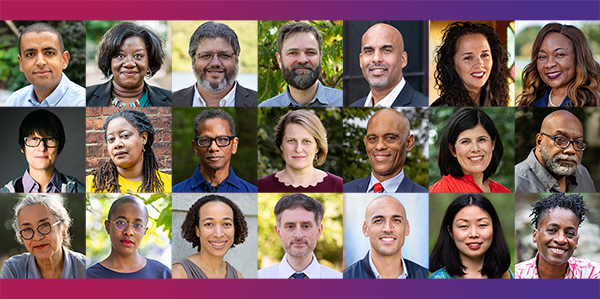
The MacArthur Foundation today named 23 new MacArthur Fellows for 2010. Working across a broad spectrum of endeavors, the Fellows include a stone carver, a quantum astrophysicist, a jazz pianist, a high school physics teacher, a marine biologist, a theater director, an American historian, a fiction writer, an economist, and a computer security scientist. All were selected for their creativity, originality, and potential to make important contributions in the future.
The recipients just learned, through a phone call out of the blue from the Foundation, that they will each receive $500,000 in “no strings attached” support over the next five years. MacArthur Fellowships come without stipulations and reporting requirements and offer Fellows unprecedented freedom and opportunity to reflect, create, and explore. The unusual level of independence afforded to Fellows underscores the spirit of freedom intrinsic to creative endeavors. The work of MacArthur Fellows knows neither boundaries nor the constraints of age, place, and endeavor.
“This group of Fellows, along with the more than 800 who have come before, reflects the tremendous breadth of creativity among us,” said MacArthur President Robert Gallucci. “They are explorers and risk takers, contributing to their fields and to society in innovative, impactful ways. They provide us all with inspiration and hope for the future.”
Among the recipients this year are:
- a type designer crafting letterforms of unequaled elegance and precision that span the migration of text from the printed page to computer screens (Matthew Carter);
- a biomedical animator illuminating cellular and molecular processes for a wide range of audiences through scientifically accurate and aesthetically rich animations (Drew Berry);
- a sign language linguist focusing on the unique structure and evolution of sign languages and how they differ from spoken languages and each other (Carol Padden);
- a population geneticist mining DNA sequence data for insights into key questions about the mechanisms of evolution, origins of genetic diversity, and patterns of population migration (Carlos D. Bustamante);
- a sculptor transforming her signature medium of marble into intricate, seemingly weightless works of art (Elizabeth Turk);
- a public high school physics teacher instilling passion for the physical sciences in young men and women through an innovative curriculum that integrates applied physics, engineering, and robotics (Amir Abo-Shaeer);
- an American historian disentangling the interracial bloodlines of two distinct founding families to shed fresh light on our colonial past (Annette Gordon-Reed);
- a fiction writer drawing readers, through spare and understated storytelling, into compelling explorations of her characters’ struggles in both China and the United States (Yiyun Li);
- a computer security scientist peeling back the deep interactions among software, hardware, and networks to decrease the vulnerability of computer systems and networks to remote attack (Dawn Song); and
- an entomologist protecting one of the world’s most important pollinators — honey bees — from decimation by disease (Marla Spivak).
For additional biographical information, video interviews, and downloadable photographs, meet the 2010 MacArthur Fellows.
“There is something palpable about these new MacArthur Fellows, about their character as explorers and pioneers at the cutting edge. These are women and men improving, protecting, and making our world a better place for us all. This program was designed for such people — designed to provide an extra measure of freedom, visibility, and opportunity,” said Daniel J. Socolow, Director of the MacArthur Fellows Program.
The inaugural class of MacArthur Fellows was named in 1981. Including this year’s Fellows, 828 people, ranging in age from 18 to 82 at the time of their selection, have been named MacArthur Fellows since the inception of the program thirty years ago.
The selection process begins with formal nominations. Hundreds of anonymous nominators assist the Foundation in identifying people to be considered for a MacArthur Fellowship. Nominations are accepted only from invited nominators, a list that is constantly renewed throughout the year. They are chosen from many fields and challenged to identify people who demonstrate exceptional creativity and promise. A Selection Committee of roughly a dozen members, who also serve anonymously, meets regularly to review files, narrow the list, and make final recommendations to the Foundation’s Board of Directors. The number of Fellows selected each year is not fixed; typically, it varies between 20 and 25.



